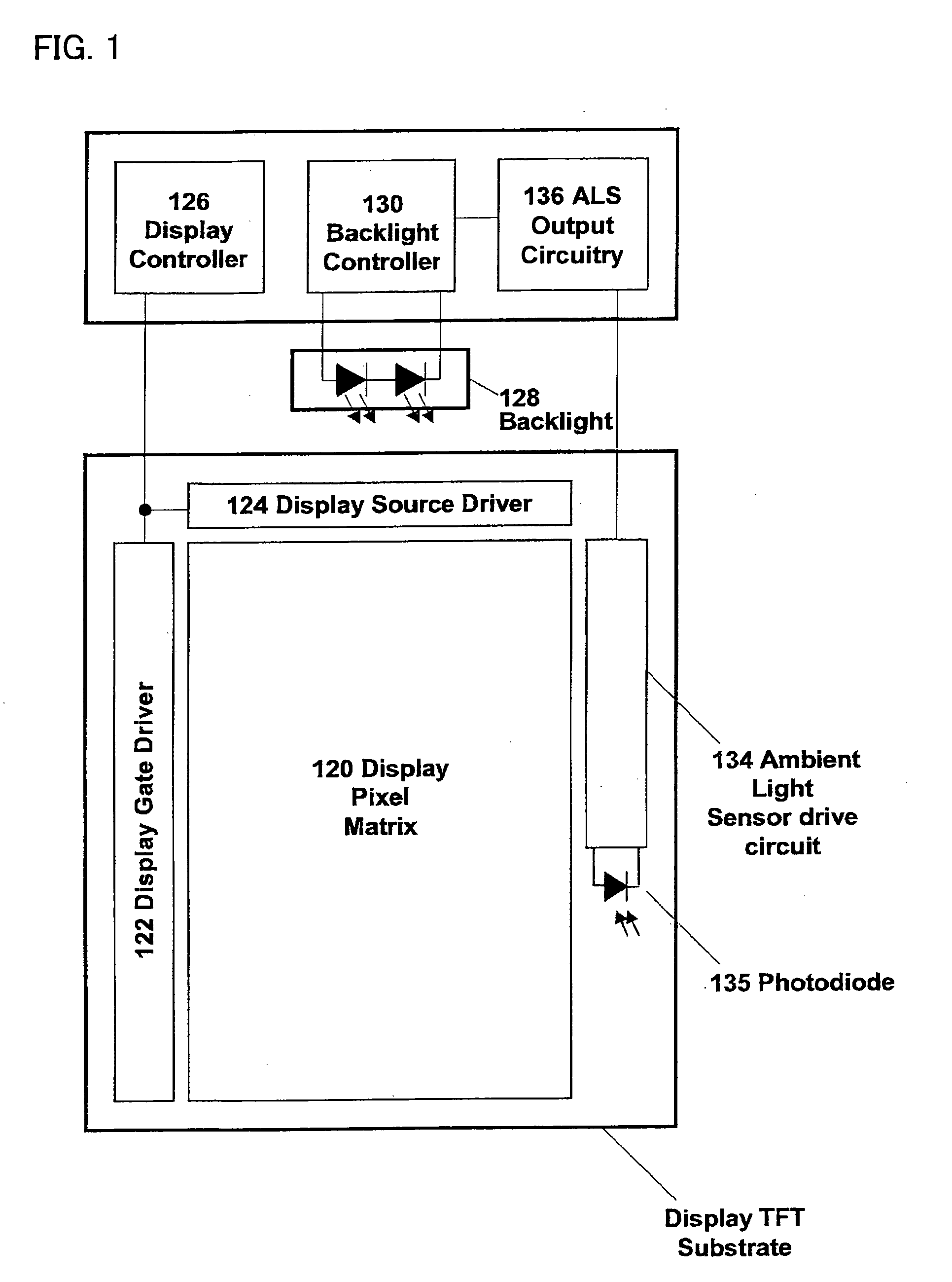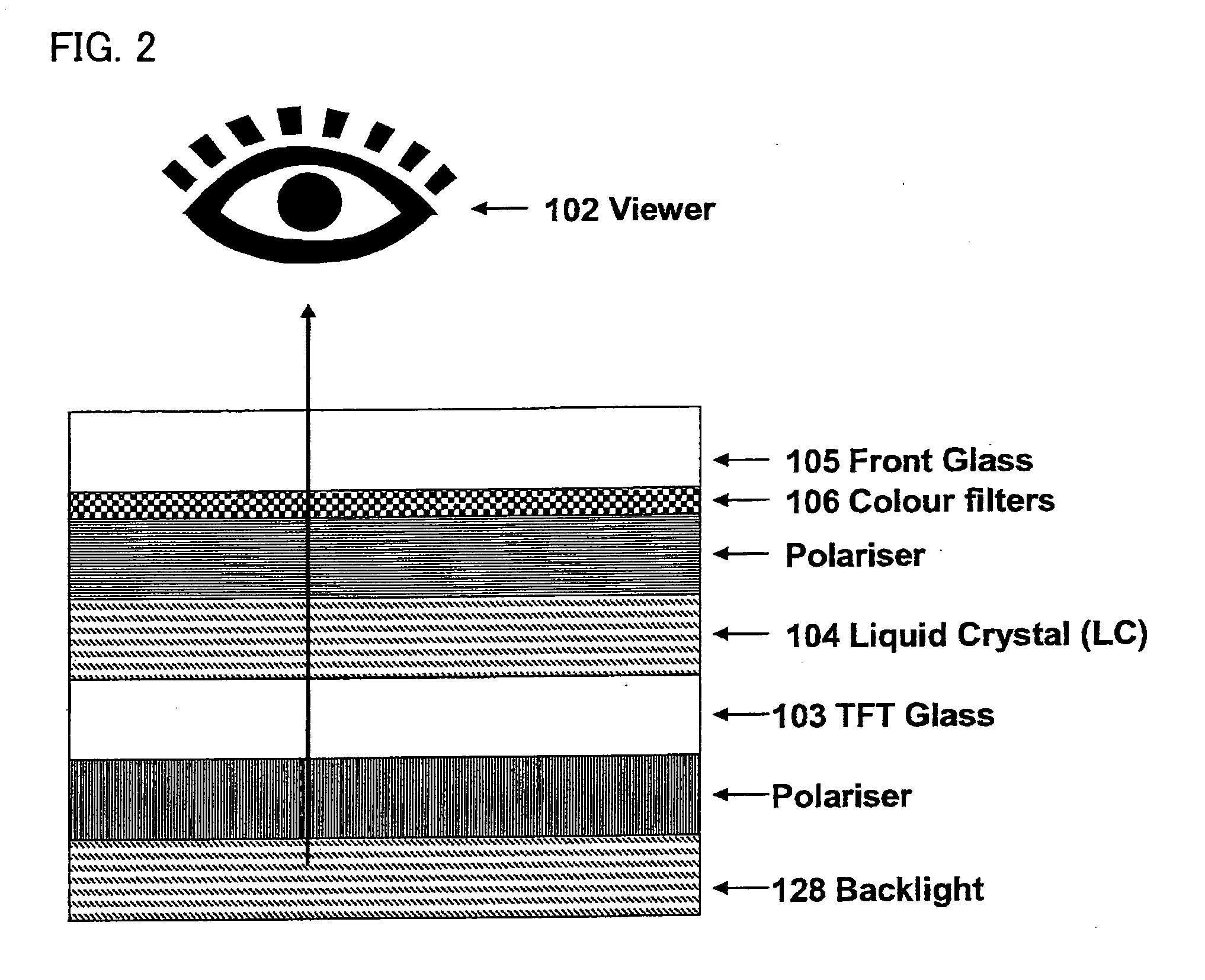Spectrally compensating a light sensor
a light sensor and spectral compensation technology, applied in the direction of optical radiation measurement, instruments, spectrometry/spectrophotometry/monochromators, etc., can solve the problem of reducing the proportion of incident light that can be detected by the sensor by using colour filters, and the sensitivity is generally limited by surface reflection, so as to achieve a relatively simple correction algorithm
- Summary
- Abstract
- Description
- Claims
- Application Information
AI Technical Summary
Benefits of technology
Problems solved by technology
Method used
Image
Examples
first embodiment
[0105]The spectral compensation processing circuitry 138 acts in use as a processor for processing the outputs of the two light sensors to give a spectrally-corrected measure of light intensity. In a first embodiment the processing circuitry evaluates (step 202) the value of parameter X, the quantity W−μ×col1. The circuit 138 may do this through a simple computer program operated by a digital processor.
[0106]In this embodiment spectral compensation is performed by the following method, shown in FIG. 10:[0107]Measure the outputs col1 and W separately from each photosensor 52, 60;[0108]Calculate X=W−μ×col1 (step 202).
[0109]The quantity X is then representative of the spectrally corrected light level. The value of the scaling constant μ will be dependent on the spectral response characteristic of the sensor and the colour filter. A possible method for calculating an appropriate value of μ is as follows, shown FIG. 11:[0110]For a sensor element having quantum efficiency function Q(λ) an...
second embodiment
[0125]The second embodiment has a light sensor comprising the following elements:[0126]A plurality of colour photodetection elements 60, 62 . . . 82 for example photodiodes, each having a colour filter of different spectral characteristics located between its photosensitive region and the direction of the incoming illumination to be detected;[0127]A white photodetection element 52, for example a photodiode having no colour filter;[0128]A means for detecting the light levels as measured by the white and colour photodetection elements, W and col1, col2 . . . colN respectively.
[0129]The spectral compensation circuit 138 consists of the following:[0130]A means 206 for using the outputs col1, col2 . . . colN of the colour photodetectors to correct the output W of the white photodetector, for example by evaluating the quantity
X=W-∑i(μi×coli);
this may be done, for example, by a simple computer program operating in Digital Signal Processing.
[0131]The system operates so as to:[0132]Measure t...
third embodiment
[0139]A third embodiment is illustrated in FIG. 14. In this embodiment a light sensor comprises the following elements:[0140]A colour photodetection element 60 which has a colour filter, for example as the blue colour filter 36 shown FIG. 3, located between its photosensitive region and the direction of the incoming illumination to be detected.[0141]A white photodetection element 52 having no colour filter.[0142]A means for detecting the light levels as measured by the white and colour photodetection elements, W and col1 respectively.
[0143]In this embodiment the spectral compensation processing circuit 138 consists of:[0144]A means 54 for evaluating the value of the parameter N, the ratio col1 / W[0145]A means 56 for calculating the value of the function g(N) for the measured value of the parameter N, for example according to a simple computer program, where g is some simple function of the variable N, for example a polynomial.[0146]A means 58 for calculating the value (for the measur...
PUM
 Login to View More
Login to View More Abstract
Description
Claims
Application Information
 Login to View More
Login to View More - R&D
- Intellectual Property
- Life Sciences
- Materials
- Tech Scout
- Unparalleled Data Quality
- Higher Quality Content
- 60% Fewer Hallucinations
Browse by: Latest US Patents, China's latest patents, Technical Efficacy Thesaurus, Application Domain, Technology Topic, Popular Technical Reports.
© 2025 PatSnap. All rights reserved.Legal|Privacy policy|Modern Slavery Act Transparency Statement|Sitemap|About US| Contact US: help@patsnap.com



